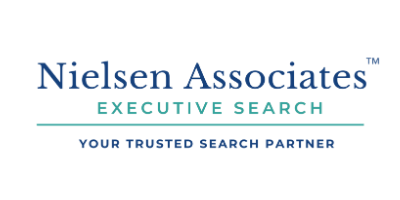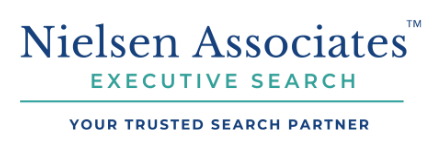Is it time to expand the C-Suite?
New C-Level roles are constantly emerging at
companies who want to align their future-focused goals with an expert leader, starting at the top. Think Chief Experience Officer, Chief Trust Officer, Chief Innovation Officer, and beyond. Adding an executive who can champion new programs, influence organization-wide change, and craft long-term vision and strategy is how many organizations achieve business results that are transformational
and sustainable.
Expanding the C-Suite is a top-level talent strategy when you take the business roadmap seriously.
An expanded C-Suite results in more balance, strategy and accountability at the top. There’s a wider range of organizational priorities for the executive group to harmonize, and a greater diversity of perspectives.
Collaboratively, a diverse executive team grows their organization in a more unified, holistic, and connected way. They put the right cross-functional business strategies in place so there’s less operational redundancy, optimized processes and work-flows, alignment of strategy and corporate messages, and maximum ROI.
5 Reasons to Grow
Your C-Suite
1 - When you want to increase accountability for specific business goals, top down.
2. When you need deeper knowledge, experience, and expertise at the executive level, in order to more effectively steer corporate strategy, and influence stakeholders and board members.
3. When you want a more diverse leadership team.
4. When you want hands-on executives and more executive presence, without causing top-level burnout and overwhelm.
5. When you want greater alignment between corporate values, culture, and business goals.
CHROs: Starting With People
Chief Human Resources Officers (CHROs) bring unique value to the table in particular. Because they tend to be much more
human-centered, CHROs add necessary balance when the primary focus is on business financials, infrastructure, operations, and the competitive landscape.
CHROs (and Chief People Officers) prioritize employees as key stakeholders in all business activities; they understand people drive business results; and they know how to minimize organizational risk. Collaboratively with their colleagues, CHRO’s are able to do more strategic, high-level work, beyond day-to-day HR operations. They maintain focus on the future of the organization and its people. Jim Link, Chief Human Resources Officer at Randstad recently echoed this as a Forbes Contributor: “In my mind, the role of the CHRO must evolve to become a “future of work expert.” The CHRO needs to understand — and strategize in advance of — emerging trends that will have huge impacts on organizations and workforces of the future.
"New workforce models, leadership skills, and talent needs are just around the corner.
If the CHRO isn’t planning for it, who is?"
Jim Link
Chief Human Resources Officer
Randstad North America
CHROs Making an Impact
When there are high-ranking HR Executives at the table, the company’s people strategies become more prominent and ubiquitous. Here’s how:
Talent
CHRO’s steer and unify a wide span of strategic talent initiatives, including recruiting, employer branding, job architecture, compensation and benefits, performance management and retention, professional development, and succession planning. They identify emerging skill sets that the organization needs to execute goals and thrive in the future; they ensure the right competencies are being emphasized during talent acquisition; they put diversity front and center; and they own resource allocation planning for future-slated initiatives which are often confidential during early stages. They select an HR tech infrastructure that optimizes talent acquisition, workforce planning, and learning management.
Organizational Design
With the rise of cloud-based ERP and perpetual, accelerated digital transformation, it’s safe to say many companies are currently “in a design phase.” Companies are re-imagining how work gets done; and HR leaders are being asked to define the who, what, why, where and when. More than ever before, HR leaders are 'consulting on the inside’ to structure the business and shape operations. HR roles are evolving; and there’s a greater demand for executive guidance and sponsorship. CHROs are needed to influence and guide a variety of OD activities including:
- re-architecting an organization’s structure; including functional teams, individual jobs; and mission-critical roles
- applying an “employee-centered” approach when designing operational workflows, policies, and programs
- advocating for wellbeing, purpose and meaning
- workforce scheduling that’s more fluid and flexible
Change Management
As companies zoom fast towards the future, there are inevitable paradigm shifts to navigate. Change adoption always comes with some level of push-back, particularly when change is broad. Executives who are accountable care about morale AND optimized implementations, and they seek to understand the source of change resistance so that real concerns can be addressed by leaders across the organization. It requires more communication, more inclusivity, more feedback and listening, and more iteration than ever.
Organizational Culture
The concept of
workplace culture is transforming to encompass much more, including leadership philosophy, management strategy and style. Organizations are discovering that culture isn’t location-specific, and it permeates everything, regardless of where employees work. As a result, CHROs are re-defining leadership and mapping out new leadership competencies; and they’re refocusing and upskilling leadership teams to meet new and future demands.
“For an organization to truly become human at its core, HR must take the lead in embedding human considerations into every aspect of work, collaborating with business leaders to reimagine work across the entire organization.”
Deloitte Human Capital Trends
Part of this involves overseeing an important cultural shift as companies rely more heavily on technology to make a tangible cultural impact. Organizations need to deliver productivity tools, benefits, perks, and programs that can be distributed digitally, anywhere, any time. This means new digital platforms for team collaboration, feedback, recognition, rewards, and beyond. There’s new technology to manage and optimize, more digital fluency is needed across the entire workforce; and there are more data insights for executives to learn from.
Employee Experience
Having a high-ranking HR leader at the top results in employee-centered everything - from better employee experiences with consumer-grade conveniences; to business policies that are designed with worker well-being in mind. Big picture, wall-to-wall employee experience strategies are cross-functional, and they shape how workers experience a company during all stages of the employee lifecycle— from the very first touchpoint during recruiting and onboarding, to everyday performance management, career development, leadership succession, benefits utilization, and retirement. CHROs who focus on lifecycle experiences see increased retention, higher employee satisfaction scores, and higher program utilization, but there’s more. EX is also a customer strategy. The Josh Bersin company recently found that companies who are leveraging the right EX Strategies are 2.2x more likely to reach financial targets, and 2.4x more likely to delight customers.
Here's Why & When to add a CHRO:
- When you need to align business goals with people strategies
- When you are struggling to find, retain and develop talent
- During periods of transformation and change
- When you need an executive leader who excels at communication to effectively manage all stakeholders
- When you want a more prominent people strategy that starts at the very top, executed top-down
- When you want an executive who can review and influence strategic decisions with a unique, human-centered lens.
Grow your Executive Team with Nielsen Associates
For over 20 years, Nielsen Associates has built, developed and nurtured a network of talented Human Resources leaders. We can quickly present the most progressive, capable, trustworthy candidates in the industry. Request a free consultation with our team of specialized recruiters to learn more about our executive search services.












